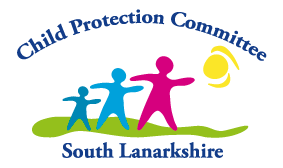Child abuse and neglect
Abuse and neglect are all forms of maltreatment of a child. Somebody may abuse or neglect a child by inflicting significant harm on a child or by failing to take action to prevent harm. Children may be abused in a family or in an institutional setting, by those known to them or, more rarely, by a stranger. Assessments will need to consider whether abuse has occurred or is likely to occur. It is helpful to consider and understand the different ways in which children can be abused.
The following definitions show some of the ways in which abuse may be experienced by a child but are not exhaustive, as the individual circumstances of abuse will vary from child to child.
Neglect may also result in the child being diagnosed as suffering from 'non-organic failure to thrive' where they have significantly failed to reach normal weight and growth or development milestones and where physical and genetic reasons have been medically eliminated. In its extreme form children can be at serious risk from the effects of malnutrition, lack of nurturing and stimulation. This can lead to serious long-term effects such as greater susceptibility to serious childhood illnesses and reduction in potential stature. With young children in particular, the consequences may be life-threatening within a relatively short period of time.
The following definitions show some of the ways in which abuse may be experienced by a child but are not exhaustive, as the individual circumstances of abuse will vary from child to child.
Physical abuse
Physical abuse is the causing of physical harm to a child or young person. Physical abuse may involve hitting, shaking, throwing, poisoning, burning or scalding, drowning or suffocating. Physical harm may also be caused when a parent or carer feigns the symptoms of, or deliberately causes, ill health to a child they are looking after. For further information, see the section on Fabricated or induced illness.
Emotional abuse
Emotional abuse is persistent emotional neglect or ill treatment that has severe and persistent adverse effects on a child’s emotional development. It may involve conveying to a child that they are worthless or unloved, inadequate or valued only insofar as they meet the needs of another person. It may involve the imposition of age- or developmentally-inappropriate expectations on a child. It may involve causing children to feel frightened or in danger, or exploiting or corrupting children. Some level of emotional abuse is present in all types of ill treatment of a child; it can also occur independently of other forms of abuse.Sexual abuse
Sexual abuse is any act that involves the child in any activity for the sexual gratification of another person, whether or not it is claimed that the child either consented or assented. Sexual abuse involves forcing or enticing a child to take part in sexual activities, whether or not the child is aware of what is happening. The activities may involve physical contact, including penetrative or non-penetrative acts. They may include non-contact activities, such as involving children in looking at, or in the production of, pornographic material or in watching sexual activities, using sexual language towards a child or encouraging children to behave in sexually inappropriate ways.Neglect
Neglect is the persistent failure to meet a child’s basic physical and/or psychological needs, likely to result in the serious impairment of the child’s health or development. It may involve a parent or carer failing to provide adequate food, shelter and clothing, to protect a child from physical harm or danger, or to ensure access to appropriate medical care or treatment. It may also include neglect of, or failure to respond to, a child’s basic emotional needs.Neglect may also result in the child being diagnosed as suffering from 'non-organic failure to thrive' where they have significantly failed to reach normal weight and growth or development milestones and where physical and genetic reasons have been medically eliminated. In its extreme form children can be at serious risk from the effects of malnutrition, lack of nurturing and stimulation. This can lead to serious long-term effects such as greater susceptibility to serious childhood illnesses and reduction in potential stature. With young children in particular, the consequences may be life-threatening within a relatively short period of time.
